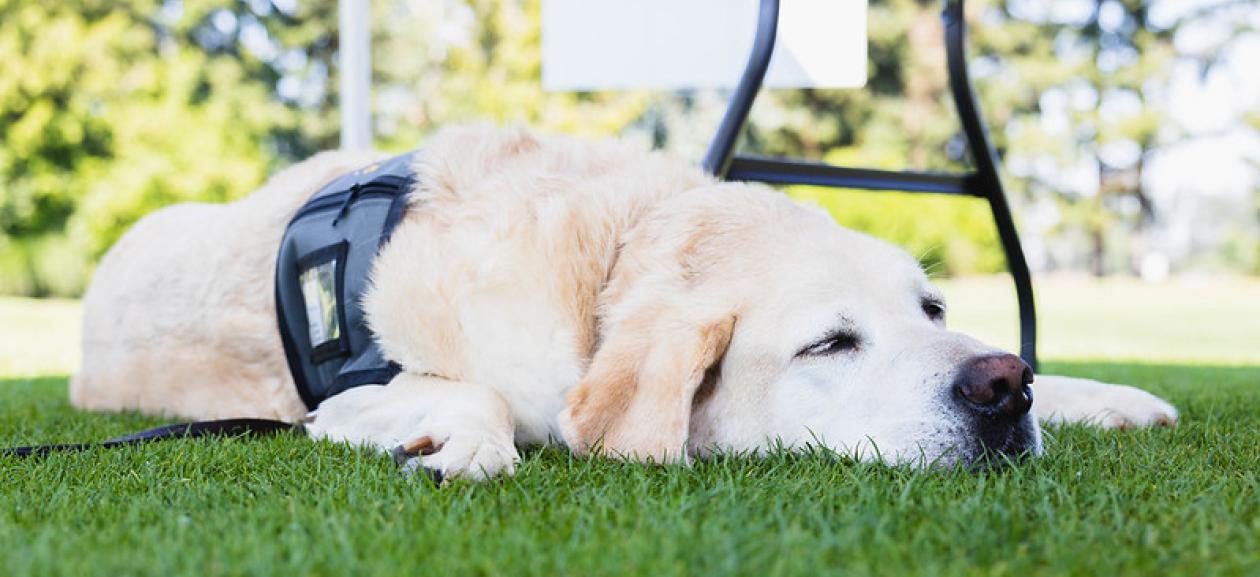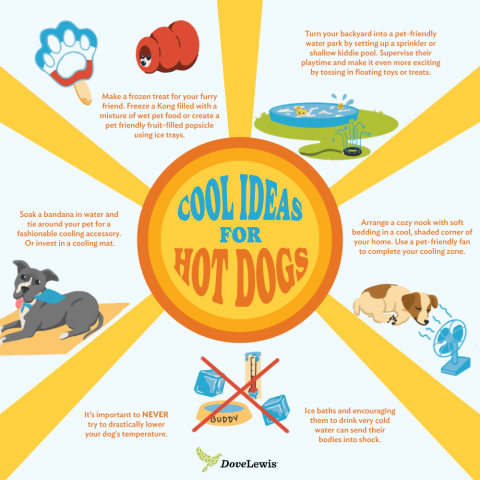
Cool Ideas for Hot Pets: Creative Ways to Beat the Heat
When the sun is blazing and the temperature is soaring, it's important to keep our pets cool and comfortable. While providing shade and more water are the basics, why not add some creativity to help beat the heat?

Make a Frozen Treat
Fill a Kong or a similar toy with a mixture of wet pet food or peanut butter and freeze it. It'll provide both a refreshing treat and a stimulating challenge for your pet. Create fruit-filled popsicles by blending pet-friendly fruits like watermelon, strawberries, and blueberries with water. Pour the mixture into molds or ice cube trays or spread it onto a lick pad to make a refreshing and nutritious treat for hot days!
When making these fun treats, use only pet-safe fruits like watermelon (no seeds or rind), strawberries, or blueberries. Avoid toxic foods like grapes, raisins, citrus fruits, or anything containing xylitol (a sugar substitute found in some peanut butters and yogurts).
Cooling Accessories
Soak a bandana in water, wring out the excess, and tie it around your pet's neck. The evaporating water will help keep them cool while adding a fashionable touch to their summer ensemble. Try investing in a cooling mat or bed specifically designed to lower your pet's body temperature. These mats use cooling gel technology or water-absorbent materials to provide a cool surface for lounging.
Turn Your Backyard into a Pet-Friendly Water Park
Set up a sprinkler and let your pets frolic in the refreshing spray. Many pets enjoy chasing the water streams or simply cooling off by lying down nearby. Look into investing in a small, shallow kiddie pool and fill it with water for your pets to splash around in. Supervise their playtime and make it even more exciting by tossing in floating toys or treats for them to retrieve.
Remember: make sure the water is a comfortable temperature. If the water feels uncomfortably cold to you, it’s likely too cold for your dog, especially smaller breeds or older pets. In general, water below 50°F can increase the risk of hypothermia, so it’s best to avoid letting pets swim or play in water that cold for extended periods.
Note: If your summer plans include a day at the ocean, river, or lake with your dog, please be mindful of pet water safety. Before letting your dog jump into any open water, check online or in the surrounding area for notices about bacteria, algae, or currents that could cause major harm to your pet. Always travel with a separate bottle and travel bowl for your pup to ensure they don’t drink from open water or puddles.
Create a Cool Zone
Arrange a cozy nook with soft bedding in a cool, shaded corner of your home. It could be under a table or in a secluded spot where your pet can relax and escape the heat. Or set up a fan in a pet-friendly area to improve air circulation and create a cooling breeze. Make sure it's safe and secure, keeping cords out of reach.
Cooling Pets Off Safely
Dogs regulate their body temperature differently than humans, making understanding their unique needs on hot days crucial. Unlike humans, who cool down primarily through sweat, dogs have sweat glands in their paws, but their primary cooling mechanism is panting. Panting works by circulating cool air into their body, lowering their temperature, and moving oxygen through the bloodstream.
It’s important to never try to drastically lower your dog's temperature. Avoid ice baths or forcing pets to drink ice-cold water, as this can cause blood vessels to constrict, limiting heat loss and potentially leading to shock or other complications. Always cool pets gradually using cool (not cold) water and a fan or damp towels.
Hot weather doesn't have to put a damper on your pet's fun. With these creative ideas to help cool your dog or cat off, you can keep them comfortable throughout the summer. Let the summer adventures begin, and may your pets stay cool and happy all season long!
Download Cool Ideas for Hot Dogs Infographic




